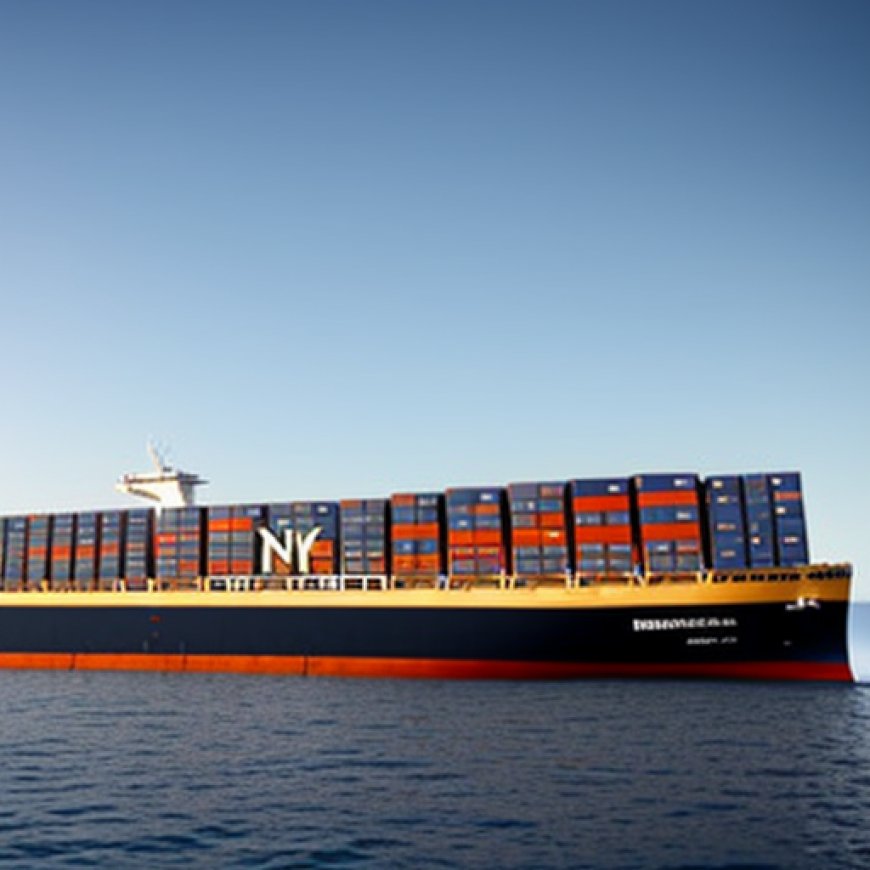NYK Bulker Completes Biofuel Bunker Trial
NYK Bulker Completes Biofuel Bunker Trial Ship & Bunker


Sustainable Development Goals (SDGs) in Action: NYK Completes Biofuel Bunker Trial

The fuel was supplied by Toyota Tsusho Marine Fuels. Image Credit: NYK
Introduction
Japanese shipping company NYK has successfully completed a trial of biofuel bunkers on board one of its dry bulk carriers. This initiative aligns with the Sustainable Development Goals (SDGs) set by the United Nations to promote sustainable practices and reduce greenhouse gas (GHG) emissions in the shipping industry.
Biofuel Bunker Trial Details
The bulker Sunrise Serenity, operated by NYK subsidiary Asahi Shipping, underwent a biofuel bunkering operation at the port of Kobe on July 28. The vessel then consumed the biodiesel during its voyage to Newcastle, Australia. The biofuel was supplied by Toyota Tsusho Marine Fuels, highlighting the collaboration between different stakeholders in the maritime sector to drive sustainable solutions.
Partnership and Objectives
This trial was conducted in partnership with Kobe Steel, which utilizes the vessel to transport its cargoes. The three companies involved – NYK, Asahi Shipping, and Kobe Steel – aim to promote the development of a biofuel supply chain in the Kansai and Setouchi areas. By sharing the knowledge gained from this test voyage, they hope to encourage further decarbonization initiatives within the industry.
Benefits of Biofuel Bunkers
The demand for biofuel bunker blends is increasing as shipowners recognize their potential as a drop-in replacement for conventional fuels. These blends offer a lower carbon footprint, enabling shipowners to reduce GHG emissions without the need to invest in new ships capable of running on alternative fuels. This approach aligns with the SDGs, particularly Goal 13: Climate Action, and Goal 14: Life Below Water.
SDGs, Targets, and Indicators
| SDGs | Targets | Indicators |
|---|---|---|
| SDG 7: Affordable and Clean Energy | 7.2: Increase the share of renewable energy in the global energy mix | The use of biofuel bunkers as a renewable energy source for shipping |
| SDG 13: Climate Action | 13.2: Integrate climate change measures into national policies, strategies, and planning | The trial of biofuel bunkers as a climate change mitigation measure |
| SDG 14: Life Below Water | 14.1: By 2025, prevent and significantly reduce marine pollution of all kinds | The use of biofuel bunkers to reduce marine pollution from conventional fuels |
1. Which SDGs are addressed or connected to the issues highlighted in the article?
The issues highlighted in the article are connected to SDG 7 (Affordable and Clean Energy), SDG 13 (Climate Action), and SDG 14 (Life Below Water).
2. What specific targets under those SDGs can be identified based on the article’s content?
Based on the article’s content, the specific targets that can be identified are:
– Target 7.2: Increase the share of renewable energy in the global energy mix
– Target 13.2: Integrate climate change measures into national policies, strategies, and planning
– Target 14.1: By 2025, prevent and significantly reduce marine pollution of all kinds
3. Are there any indicators mentioned or implied in the article that can be used to measure progress towards the identified targets?
Yes, there are indicators mentioned or implied in the article that can be used to measure progress towards the identified targets. These indicators include:
– The use of biofuel bunkers as a renewable energy source for shipping (Target 7.2)
– The trial of biofuel bunkers as a climate change mitigation measure (Target 13.2)
– The use of biofuel bunkers to reduce marine pollution from conventional fuels (Target 14.1)
By monitoring the adoption and impact of biofuel bunkers in the shipping industry, progress towards the identified targets can be measured.
4. SDGs, Targets, and Indicators
| SDGs | Targets | Indicators |
|---|---|---|
| SDG 7: Affordable and Clean Energy | 7.2: Increase the share of renewable energy in the global energy mix | The use of biofuel bunkers as a renewable energy source for shipping |
| SDG 13: Climate Action | 13.2: Integrate climate change measures into national policies, strategies, and planning | The trial of biofuel bunkers as a climate change mitigation measure |
| SDG 14: Life Below Water | 14.1: By 2025, prevent and significantly reduce marine pollution of all kinds | The use of biofuel bunkers to reduce marine pollution from conventional fuels |
Behold! This splendid article springs forth from the wellspring of knowledge, shaped by a wondrous proprietary AI technology that delved into a vast ocean of data, illuminating the path towards the Sustainable Development Goals. Remember that all rights are reserved by SDG Investors LLC, empowering us to champion progress together.
Source: shipandbunker.com

Join us, as fellow seekers of change, on a transformative journey at https://sdgtalks.ai/welcome, where you can become a member and actively contribute to shaping a brighter future.







